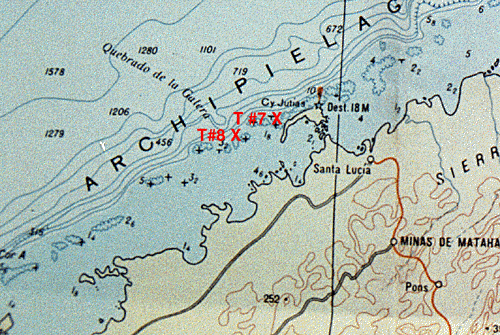

Cayo Jutias
Cuba Report - Index Cayo Jutias

If the biota, in the course of aeons, has built something we like but do not understand, then who but a fool would discard seemingly useless parts? To keep every cog and wheel is the first precaution of intelligent tinkering. Aldo Leopold, Round River, 1993.
Reef Relief Founders.com

The coral reefs in this area were the healthiest and the most diverse. A causeway has recently been built to the once remote Cayo Jutias in order to create a weekend tourist destination. This area is very close to the port of Santa Lucia which releases a tremendous amount of atmospheric pollution from the industries which are operating there. There was an unusual amount of Black Band disease on the reefs on Cayo Jutias on transect #7.
Cruising and Diving Notes from the Log of Stormy Weather
June 14, 1998 Cayo Jutias North corner—transect 7 water green.
This reef is located off of the western corner of Cayo Jutias. There are many Diplora Strigosa colonies on this reef which has grown on top of ancient shallow coral plateaus very close to the shore line. There is a drop off from two feet of water (the shallow sections) to about fifteen feet of water. Many cases of Black Band disease were observed on Diploria clivosa colonies that appeared otherwise, healthy. The Acropora palmata were not looking very healthy either. There were no commercial species of fish nor sea urchins observed. A causeway built to this cay makes it accessible to local tourists. Tobacco farms are located very close to these reefs and there is a large industrial complex near by at Santa Lucia.
June 14, 1998 Cayo Jutias—Sea buoy on the west side. Transect 8.
Transect 8 west of Cayo Jutias was the most diverse reef encountered even though there was a lot of dead coral. This area is not as heavily fished because of its remote location. For the first time, we saw large parrot fish and a few large snappers. Diadema were also spotted in a few areas. Acropora cervicornis was on this reef as well as Acropora palmata. Like most all of the reefs on the north coast, they are subject to north winds and winter storms. There was not as much algae on this reef as on the other transects.


